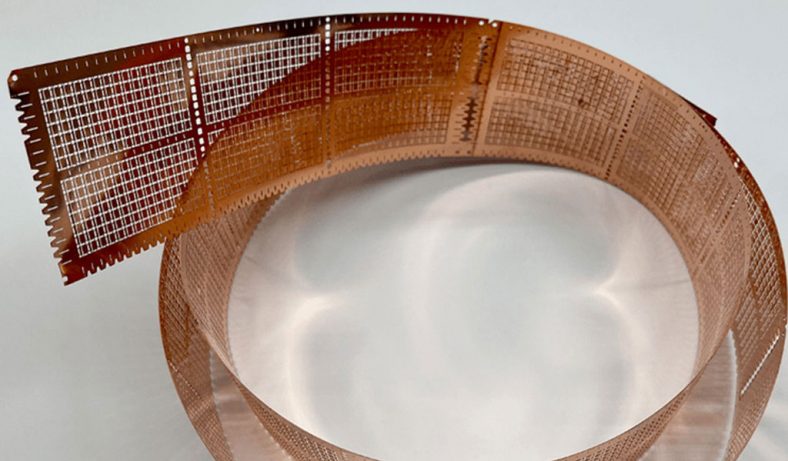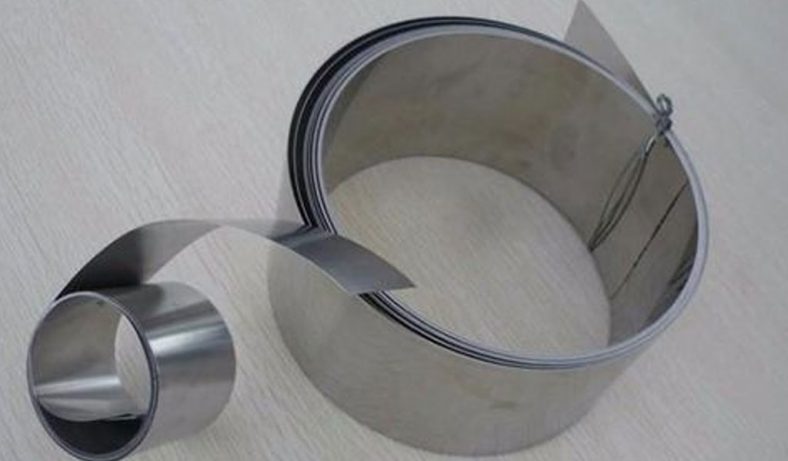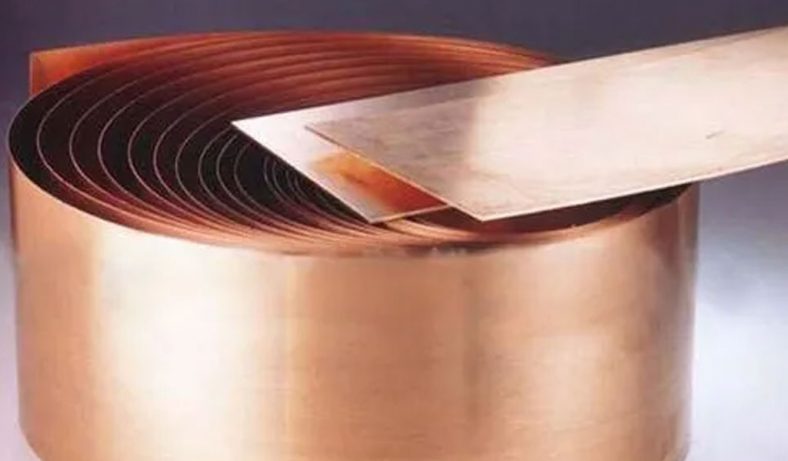Homepage » Metal Etching »
Telecom Etching – Metal Etching for Telecommunications
Telecommunications etching is a highly specialized manufacturing technique used in the production of electronic and communication components, including intricate circuits, antennas, waveguides, filters, and shielding components. Etching is a subtractive manufacturing process that involves removing material from a substrate to create patterns, structures, or surfaces with specific characteristics. In telecommunications, where signal clarity, frequency precision, and compact component designs are paramount, etching allows manufacturers to achieve high levels of accuracy, flexibility, and efficiency. This process is used extensively in the fabrication of various telecommunication devices and infrastructures, including cellular antennas, satellite communication systems, RF and microwave devices, and fiber-optic networks.

Telecommunications etching is primarily used to fabricate components and parts that require high precision, miniaturization, and complex designs. As demand for faster and more reliable communication networks has grown, the telecommunications industry has increasingly relied on etching to produce high-performance, high-frequency components.
Modern telecommunications infrastructure demands components that operate reliably across various frequencies, sometimes in challenging environmental conditions. Etching allows manufacturers to create custom designs with fine details and high accuracy, meeting the stringent requirements of telecommunications systems.
Telecommunications etching involves several methods, with the most common being photochemical etching, laser etching, plasma etching, and reactive ion etching (RIE). These techniques vary in their processes, capabilities, and applications but share the same goal of achieving precise material removal for optimal component function. The choice of etching method often depends on factors such as the material being used, the design complexity, and the desired outcome.
Our Telecom Etching Service
If you need Telecom parts etched we are one of the most capable and affordable sources specializing in manufacturing custom etched parts on advanced photo etching machines with cnc precision. Through our Photo Chemical Etching process, the smallest and most complex designs are made possible such as electrical spring contacts, contact membranes, busbars, antennae and micro antennae, spring fingered contacts, heating elements and battery terminal as well as many other bespoke components to your own designs.

We can machine to print and accept the most common file formats including: .dwg .dxf .iges .step .sat as well as .pdf files. If you don’t see your file format here let us know. Please send us files to: [email protected] We can accept both small and large run jobs of custom Telecom etching parts.

Our Etching Capabilities
- Etching of many grades of metal and more
- Combining Stamping, Laser Cutting,CNC machining and photochemical etching on sheets up to 2mm thick
- Etching of up to 0.025″ thick sheets as large as 22×12 inches
- Tolerances of ±.0005″ in many applications
How To Etch Telecom Parts

Automated-Coating 
Automatic-Baking-Line 
Automatic-Shearing 
Coating-For-Etching-Parts 
Deinking 
Etching 
Exposure 
Inspection-For-Etching
Materials Used in Telecommunications Etching
The materials used in telecommunications etching are carefully selected based on their electrical, mechanical, and thermal properties. The choice of material significantly influences the component’s performance, longevity, and compatibility within telecommunication systems.
- Copper and Copper Alloys: Copper is highly conductive, making it ideal for components such as connectors, antenna elements, and RF shielding. Alloys like beryllium copper offer additional strength and are often used in situations requiring both electrical conductivity and mechanical resilience.
- Aluminum: Aluminum is lightweight and corrosion-resistant, making it suitable for outdoor telecommunications equipment. It is also used in antenna components, waveguides, and structural frames. Aluminum’s favorable cost-to-performance ratio is a major advantage in large-scale manufacturing.
- Stainless Steel: Stainless steel offers corrosion resistance, strength, and durability. It’s commonly used for structural parts in telecommunications equipment that are exposed to environmental elements, such as towers and outdoor enclosures.
- Nickel and Nickel Alloys: Nickel provides a good balance of electrical conductivity and corrosion resistance, making it valuable in etching applications where durability is essential. Nickel alloys are often chosen for high-temperature environments.
- Polymers: Polymers such as polyimide and Teflon® are commonly etched for telecommunication applications that require dielectric properties, such as substrates for printed circuit boards (PCBs).
Applications of Telecommunications Etching
Telecommunications etching is critical to the fabrication of various components used in signal transmission, data processing, and network infrastructure. Some key applications include:
- Antenna Elements: The performance of antennas, including cellular, satellite, and Wi-Fi antennas, relies on precisely shaped elements that optimize signal reception and transmission. Etching allows manufacturers to create intricate antenna designs with precise geometries that maximize efficiency.
- Waveguides: Waveguides are structures that direct electromagnetic waves from one point to another. Etched waveguides are often used in microwave and millimeter-wave applications, where precision is crucial to prevent signal loss and interference.
- Filters and Resonators: Filters and resonators are essential for eliminating unwanted frequencies and refining signal quality. Etching techniques allow for the precise manufacturing of filter components with the exact dimensions required for specific frequency bands.
- Shielding Components: Electromagnetic interference (EMI) shielding is vital in telecommunications to prevent external signals from disrupting electronic equipment. Etched metal shields are commonly used in electronic housings and circuit boards to protect sensitive components.
- Micro-connectors and Contact Pads: High-frequency connectors and contact pads require consistent dimensions and surface quality. Etching produces smooth, burr-free surfaces that improve signal continuity and reduce the risk of signal degradation.
- Printed Circuit Boards (PCBs): Although PCBs are typically associated with electronic applications, etched circuit paths are fundamental to the telecommunications industry. Etched copper traces on PCBs allow for the precise transmission of electrical signals.
Components That Are Produced By Etching Telecom Parts
The popularity of Telecom makes it a desirable metal for use in fabrication because it is easy to manufacture and has favorable properties for many industrial products.With the photo etching process, the metal is etched evenly without any structural deformations from the hard tooling used in stamping and punching.Since there isn’t a heat point of contact like laser cutting, the parts’ metal properties remain unchanged and free from thermal deformations.Get inspired by our custom etching part projects and contact us to Get Instant Quote for rapid prototype or Telecom etching parts start from 1pcs.
Metal Etching Certification,Equipment List and Quality
We are committed to enlisting the full support of all employees to continuously improve our processes and enhance quality, thereby fulfilling our customer's needs with defect free products and services, on time and every time
- ISO 9001:2015 certified
- Compliance in DFARS materials sourcing requirements
- Strict compliance with PPAP and Process FMEA
- Fully compliant with the exacting requirements of our customers
- ITAR registered
- NIST cybersecurity standard compliant
- Proprietary Patented quality systems
- Skilled in KanBan and other customer driven quality and inventory management systems
Metal Etching Material
BE-CU is experienced in precision etching various metals, allowing customers the freedom to specify components in hundreds of different materials.
The Surface Treatment Of Metal Etching Parts
Do you want your etching parts to be more corrosion-resistant or get a specific look? Metal finishing service is a essential choice to achieve your design perfectly. BE-CU – metal-etch.com is an accomplished finished parts manufacturer, our workers and craftsman are capable to provide precision metal etching services and a wide range of finishing services including aluminum anodizing, painting, passivation, electroplating, powder coating, polishing, black oxide, conversion coating, abrasive blasting, etc. We offers several common surface finishes to help improve functionality and aesthetics.
- Anodizing (Anodized)
- Passivation
- Plating (Electroplating)
- Painting
- Black Oxide (Hot Blackening)
- Polishing
- Powder Coating
- Heat Treatment
- Satin Finish
- Abrasive blasting (Sandblasting)
- Conversion coating
- Tungsten carbide coating
After browsing a list of metal finishing services, select a process based on essential considerations, like production time, cost-effectiveness, part tolerance, durability and applications. High-tolerance metal etching parts are not recommended to apply secondary metal surface finish, because the treatment may change the sizes of the finished part through removing or adding a small amount of materials.
Other requirements or custom designs, welcome to contact us for a free quote fast!























